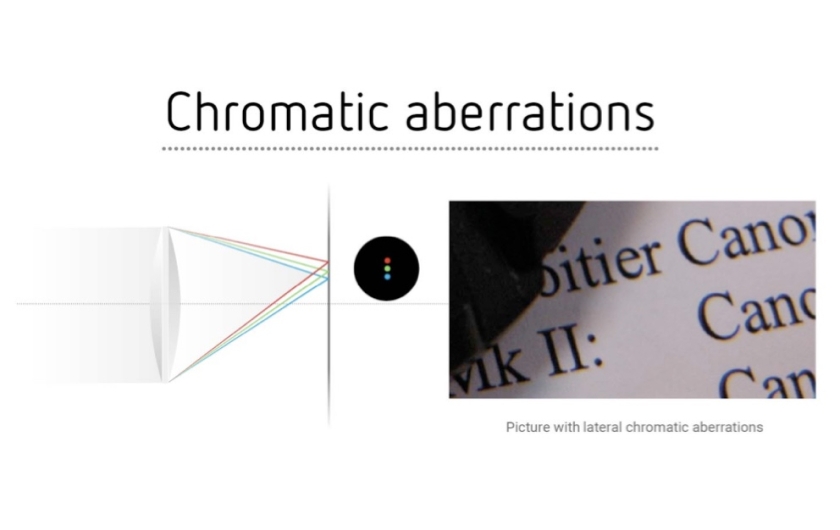
Chromatic aberration:
Remove chromatic aberrations
without losing any detail
Unsightly fringing can spoil fine detail in an image, but clumsy corrections can be too heavy-handed. DxO’s meticulous corrections ensure that images are corrected without any unwanted consequences.
What is chromatic aberration?
The phenomenon of chromatic aberration occurs when the lens is unable to converge all the colors upon the same point. Chromatic aberration appears as red or purple fringing and is especially visible in areas of high contrast.
The amount of chromatic aberration in a photo depends on the type of lens used as well as other parameters: aperture value, focal length, and focal distance.
What types of chromatic aberration are there?
There are two types of chromatic aberration. The first is lateral — or transverse — chromatic aberration. This occurs when different wavelengths of light are dispersed across the surface of a camera’s imaging sensor.
The second type of chromatic aberration is called longitudinal — or axial — aberration. This is when the different wavelengths of light are focused at points in front or behind the surface of the camera sensor.

Lateral chromatic aberrations

Longitudinal chromatic aberrations
What causes chromatic aberration in photos?
White light is made up of a full spectrum of colors, as observed in rainbows or when light is split through a prism. Each different color has a different wavelength and is refracted at a slightly different angle.
Most lenses do a pretty good job of bringing the different colors together at roughly the same point, but sometimes, especially towards the edges of an image where there are strong transitions between light and dark, chromatic aberration can appear as red or purple fringing.

DxO engineers take photographs of a dot chart at different focal lengths and distances.
A separate analysis for each chromatic channel
To assess the lateral chromatic aberration of a lens, images of a dot chart are taken with different focal lengths and distances. At different points in the field, DxO’s engineers calculate the maximum pixel distance between the different color components (red, green, and blue) of the same dot.
The resulting measurement makes it possible to establish a maximum chromatic aberration value on a precise scale. When the value is under 0.03 mm, it is not perceptible. Between 0.03 and 0.06 mm, it is visible. When the value is over 0.07 mm, it becomes problematic.

DxO’s experts use a test chart featuring a dotted grid and photograph it at different focal lengths and distances.
- Camera: Nikon D4
- Lens: 24 - 70mm f/2.8
- Parameters: ISO 100 - 1/400 - f/16 - 29mm
- DxO PureRAW
How does DxO correct chromatic aberration?
DxO algorithms correct chromatic aberration by aligning the geometric position of each color in the scene being photographed.
Because chromatic aberration varies according to the focal length and distance, DxO algorithms factor in these two key parameters to correct chromatic aberration in RAW and JPEG images more effectively. As a result, the software removes colored outlines without degrading a photo’s color and detail.


DxO algorithms correct chromatic aberrations by removing colored outlines without degrading the photo’s color and details.
- Camera: Nikon D4
- Lens: 24 - 70mm f/2.8
- Parameters: ISO 100 - 1/400 - f/16 - 29mm
- DxO PureRAW

Try DxO’s software for free
Find out why photographers are switching to DxO with a free trial.
Onboarding tutorials
Access to all features
No payment details required
Discover camera and lens corrections with DxO PhotoLab 7 with DxO PureRAW 4
Try premium technical and creative software that will revolutionize your workflow.



